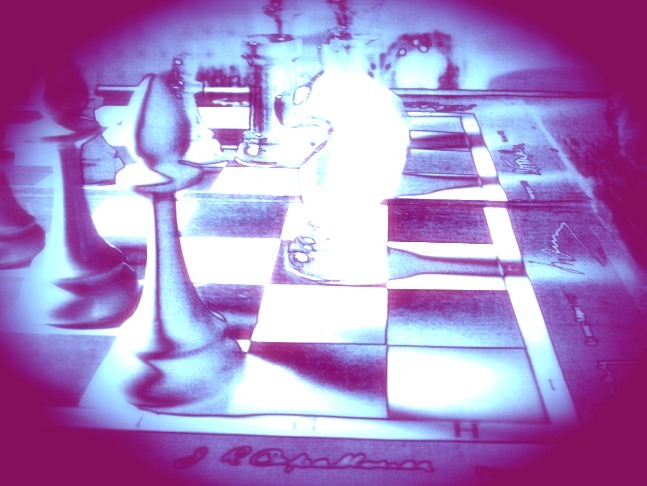
I thought I would finish this story at the end of 2019.
I wrote 8 chapters and it took me about 4 years.
You can see why. We didn't have any of the history I mentioned before. And even though the zh community has been sustainable for over 20 years it is not as large compared to classical chess. Also the people who tried to write about it are just a few people. At the end of 2021 I came back to discord after a long break.
In the process of correspondence in discord I published some of my old notes and also suggested that the research of the zh origin story was not finished.
In discord I met a visualdennis who, in addition to chess and chess 960, was into philosophy. He was interested in my speculations and I provided him with some references. It turned out that he could take apart and translate an old German Gothic script from a book "Das Schachspiel, seine Gattungen und Abarten" (1840)
This seemed unbelievable. My old friends chronatog and okei also took part in this discussion.
We discussed with visualdennis the specifics of this lost history of the game, it was like a detective investigation.
Soon visualdennis was able to make a translation from L.Tressan book and posted it in the public domain
Commentary visualdennis from discord
"from a to g are the rules he describes and what he explains is interesting, mostly he explains how it is written im dritten Hefte des Archivs in 1821 when u read the rules, u realise that it is kind of a mix of Crazyhouse and S-Chess... it is also funny that he himself tells that the way they played with a single set as described in the book in 1821 is quite messy, and it would be much easier to play with two similar sets because with the older set (those tags) there has been confusion and people often forgot to change those tags, or sometimes there were fights over the captured pieces... also that the old set with those tags make stuff harder for people with myopia he says rules are also interesting and quite different from todays zh more like a mixture of S-Chess and Zh in later pages he explains some strategies regarding those rules like how important it is to free the backrank and make room for captured pieces as quick as possible so that you can put pieces in the first rank (which is the rule for drop) for example if u capture queen but ur queen is already on d1, u can drop it to e1 as well if the square is free and such rules etc. etc. what we can conclude from that is that Crazyhouse as it is played today is very likely a later innovation than 1821 at least. and evolved through collective efforts to what it is today."
From visualdennis' commentary we understand that "Doppelschachspiel" is indeed a real proto-crazyhouse! But its rules were somewhat different and it follows that this proto-variant is the ancestor of at least two chess variants.

We also found a fragment of mention of the invention in a later book "Geschichte und Litteratur des Schachspiels"(1874) according to the scan Doppelschachspiel is on page 353 there is some confusion with the search - when you search in a book it sends you to another page.

"13. The double chess game. ("A German invention of this year, ... which, by the way, is very simple, and consists in nothing more than : that every captured stone of the capturing player may be set up again in his army according to certain laws, and now be used in the same capacity against the enemy. That is where the name comes from. " ) Already occurs in Japan and in the numbers game."
Another brief mention in Dutch is in Antonius Linde's 1876 book "Leerboek van het schaakspel"

" 1) In 1821 someone in Berlin came up with the idea of a (64.) Doppelschachspiel, very similar to the usual one, but in which the captured figures belong to..."
I must say the research is hampered by the fact that these old German terms have a different meaning in modern times. The word "doppelschach" itself means "doblle check" in German and actually "doppel" means "double." I have found that the word is present not only in German, but also in old Estonian.
Thus we come to an even more detailed origin of the game. I also want to thank visualdennis, okei, chronatog, marlonc for their enthusiasm and interest, for their work for the community, and also Vincent who always remains an interesting conversationalist and original chess player.
It should be noted that we do not have accurate information about the game between the period 1821-1874 and also the period after. If we examine Pritchard's references we see references to the book "Jeux d'Echecs Non-orthodoxes". I drew attention to this in one of my earlier chapters, Second History of the House

There are a number of clues in there that you can also try to investigate the origin of the bughouse - in Pritchard's book it's chapter 5 page 55.
Once okei suggested the idea of creating a crazy&bug wiki and maybe someday this will be created using ever better tools to catalog new discoveries.
Nowadays we can say for sure that crazyhouse has been around for 200 years at least since 1821, when ideas related to it were discussed.